Content:
Sea buckthorn is a valuable crop, the fruits of which are rich in vitamins, microelements and other useful substances. It is a small tree or shrub. The berries stick to the branches to such an extent that even harvesting a crop is problematic, by the way, this is the name from this.
About sea buckthorn
There are quite a lot of sea buckthorn varieties; more than 50 species are grown in Russia: thornless, dwarf, frost-resistant, large-fruited and others. Not only fruits are useful in this culture, but also leaves, bark - for a long time they have been used to treat and prevent many diseases. During the heyday of Ancient Greece, sea buckthorn broth was given to warriors, thus giving them endurance and strength.
As a decorative decoration, sea buckthorn trees began to be grown 150 years ago. In the Moscow region, sea buckthorn began to be distributed in the 40s of the last century, the origins belong to Trofimov T. T. (employee of the Botanical Garden of Moscow State University).
Sea buckthorn fruits contain a lot of vitamin C (ascorbic acid), E, B, folic acid and a significant oil content (8% in juicy pulp, 12% in seed). In addition, they are rich in organic acids, sugars and tannins.
Before planting sea buckthorn on your site, pay attention to the following parameters:
- the emergence of a variety (local varieties are selected)
- ripening terms (the presence of a variety of varieties with different ripening periods makes it possible to feast on fresh fruits for a long time);
- size of fruits (harvesting and use in cooking becomes easier);
- taste (for many, this is the most important indicator);
- yield (often the determining factor);
- the size of the plant (undersized, medium-sized and vigorous, look at the capabilities of their site).
Some information about sea buckthorn:
- shrub of various sizes (up to 3-7 meters), can be prickly, branched, thornless;
- rare varieties in the form of trees are capable of reaching 6-12 meters in height;
- the bark is black-brown or dark gray;
- leaves of a two-color color: bottom - silver, top - green (dark, light);
- fruits are oval, ovoid, cylindrical, yellow, orange and red in color.
Varieties
Depending on the area of cultivation, on personal wishes, the most suitable variety of sea buckthorn is selected. The most popular are the following.
The largest varieties
The berry growing in the wild weighs about 0.2-0.3 grams, domesticated sea buckthorn has an average of 0.4-0.5 grams. Large-fruited fruits almost double - 0.7-1.5 grams. Among them are especially distinguished: Augustine, Essel, Openwork, Elizabeth, Zlata and Aurelia.
The sweetest varieties of sea buckthorn
Each variety has its own specific taste, in some it is sweeter, in others it is more sour, the most dessert characteristics are: Favorite, Altai, Pearl, Essel, Moskvichka and Vorobievskaya.
Red varieties
Unusual orange-red fruits, markedly different from the usual orange berries, are: Ognivo, Jamovaya, Inya and Etna sea buckthorn.
The best varieties near Moscow
Not every type of sea buckthorn is able to adapt to the temperate continental climate of this region, the most suitable for this are: Lomonosov, Aromatic, Botanical Amateur, Botanical aromatic, Excellent.
Suitable for the harsh climatic conditions of the Siberian regions: Augustina, Chechek, Zhemchuzhnitsa, Tenga, Elizaveta, Dzhemovaya, Orange.
The most productive are: Pepper hybrid, Moscow pineapple, Gift to the garden.
Besshorny varieties of sea buckthorn: Altai, Solnechnaya.
Frost resistant
Almost all varieties of sea buckthorn are distinguished by high winter hardiness and easily tolerate the harsh climate of Siberia, but nevertheless the following varieties stand out for the best indicators: Golden Cob, Trofimovskaya, Botanicheskaya Amateur, Dar Katun.
Male varieties of sea buckthorn
You can't do without a pollinator variety:
- The gnome is a male cultivator, characterized by high winter hardiness and disease resistance. A low-growing plant with large dark green foliage.
- Alei is a powerful bush with a lush crown that blooms profusely and for a long time.
The most useful: Pepper, Zhivko, Vitamin, differ in a more concentrated composition of nutrients.
Flowering process
Sea buckthorn is a wind-pollinated, dioecious plant. Sea buckthorn flowers are unisexual - only male (stamens) flowers grow on one plant, and only female (pistils) flowers grow on the other. The females, respectively, bear fruit, and the males serve as a pollinator. Therefore, in order to obtain a good harvest, it is necessary to plant both male and female plants on the site, which is quite problematic - before entering the fruiting period, it is impossible to determine what sex the sea buckthorn has. For 3-5 years, you can distinguish the plant by its buds: the male plant has larger buds covered with scales (like a cedar cone), in the female, the buds are much smaller and have no more than 3 scales.
Few people know how sea buckthorn blooms, all because there is nothing special in this phenomenon - neither beautiful lush flowers, nor a wonderful aroma.
Sea buckthorn can bloom at a temperature of +15 ° C. Flower buds (mixed, vegetative-generative) are laid on last year's growth. This process is activated at the stage of extinction of the enhanced growth of annual shoots, from mid-July to early August. Then, at a positive air temperature, further morphological design of the flower components takes place, before the onset of minus indicators on the thermometers, the bud reaches its normal value. In the spring, it begins to grow rapidly. On average, it takes 300-310 days from the bud to full bloom. First of all, male flowers open, usually a day before female flowers. Male flowers form a colossal amount of pollen, which, even with a slight breath of air, is transported to female flowers. Sea buckthorn bloom lasts seven days, in bad weather conditions it can be 10-12.
During the flowering period, the male plant is covered with small, petal flowers, collected in small spikelets.
The flowering time directly depends on the variety and the growing region. In most cases, sea buckthorn begins to bloom in April or May, when the foliage appears, flowers begin to form. Sea buckthorn flowers, depending on gender, have colors: the girl is yellowish, the boy is silver-brown. The inflorescences are small, faded, not bright, merge with the foliage and definitely fade in comparison with other fruit and berry trees, so few notice when the sea buckthorn blooms.
It is difficult to say exactly when sea buckthorn blooms in central Russia, on average, flowering in regions with a temperate continental climate does not begin until the first decade of May. In the regions of Siberia, Novosibirsk and the Urals, sea buckthorn begins to bloom towards the end of spring. With a protracted spring, the flowering time of the plant is also delayed.
Planting and leaving
The culture is planted in autumn or spring.It is preferable to do this in the spring - planting in the autumn period does not guarantee the survival of the seedling, no matter how hardy it may have. The site should be sunny, protected from cold winds, with light neutral soil. Before planting (or better in autumn), humus (7-8 kg), mineral fertilizers (double superphosphate) and a handful of wood ash are introduced into the hole.
The seat is 60 * 60 cm. Depending on the size of the root system, the root collar is placed at ground level. Drainage is laid on the bottom with a 20 cm layer (gravel, broken brick). After planting, the tree trunk circle is immediately watered and mulched. When planting several plants, the gap between them should not be less than 2.5 meters.
Sea buckthorn pruning is carried out in the spring, until the buds begin to bloom. Crown formation is carried out up to 4-5 years, correcting abnormally growing branches.
At the age of 8-10, rejuvenating pruning is carried out: old branches with a small increase are removed, keeping 3-year-old shoots.
Sanitary pruning of the tree is carried out annually: removal of diseased, dry, damaged branches.
The roots of the culture are capable of spreading to 8-12 meters, in order to avoid this, in the fall, they annually dig in the place allocated for the tree, chopping up the roots that have gone beyond its limits, then they are removed. Experienced gardeners recommend digging slate around the perimeter, 25 cm deep, since the sea buckthorn roots do not go deeper, they are practically in the surface layer of the earth. Therefore, loosening, digging in the near-trunk circle is strictly prohibited.
Sea buckthorn is a valuable crop, which simply must be in every garden plot, and there are no particular difficulties in growing it. Adequate care will please you with a good quality harvest.
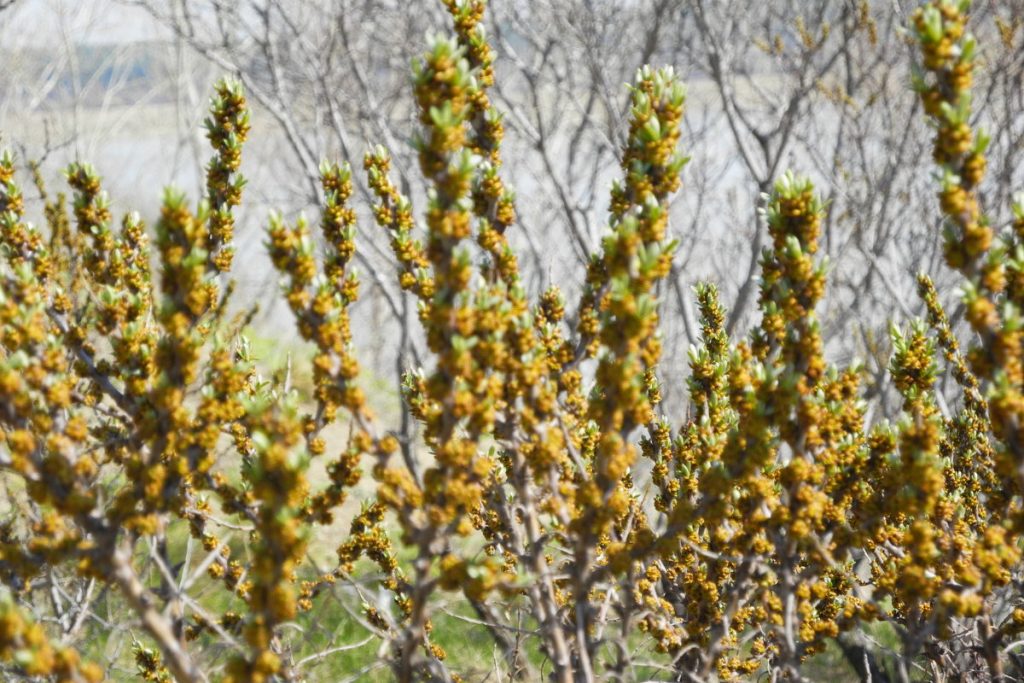
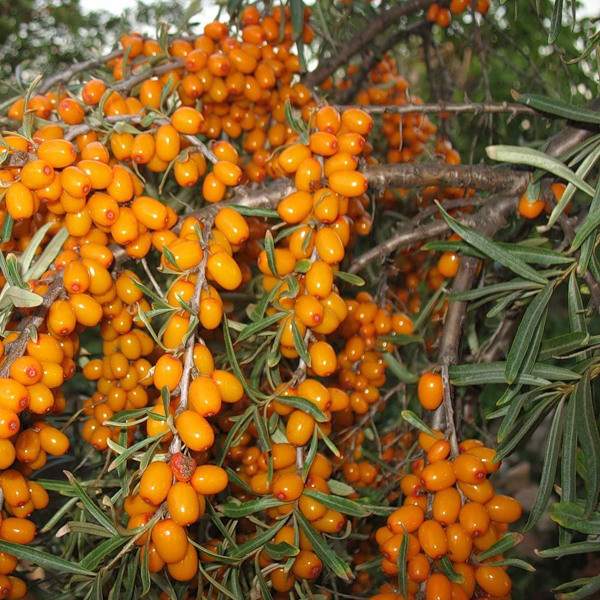
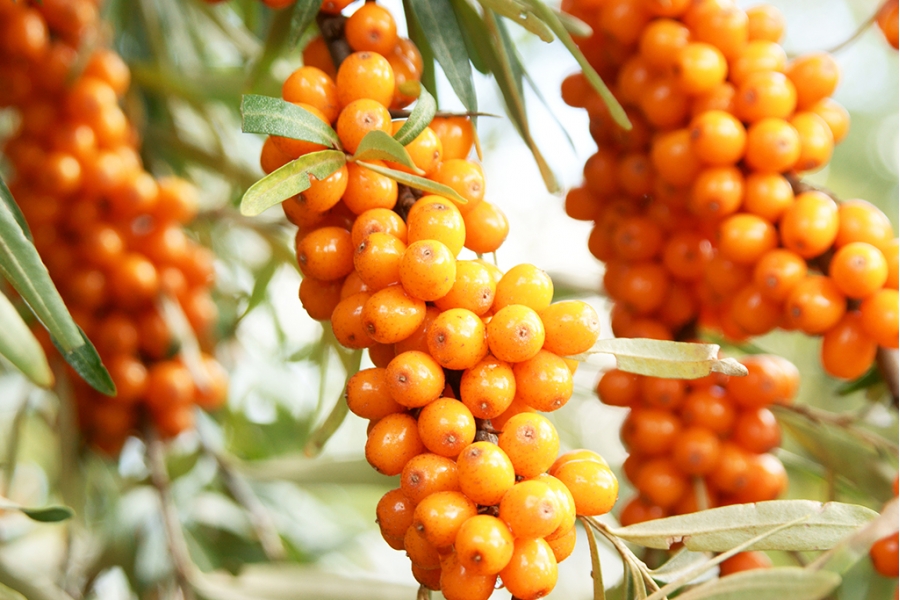
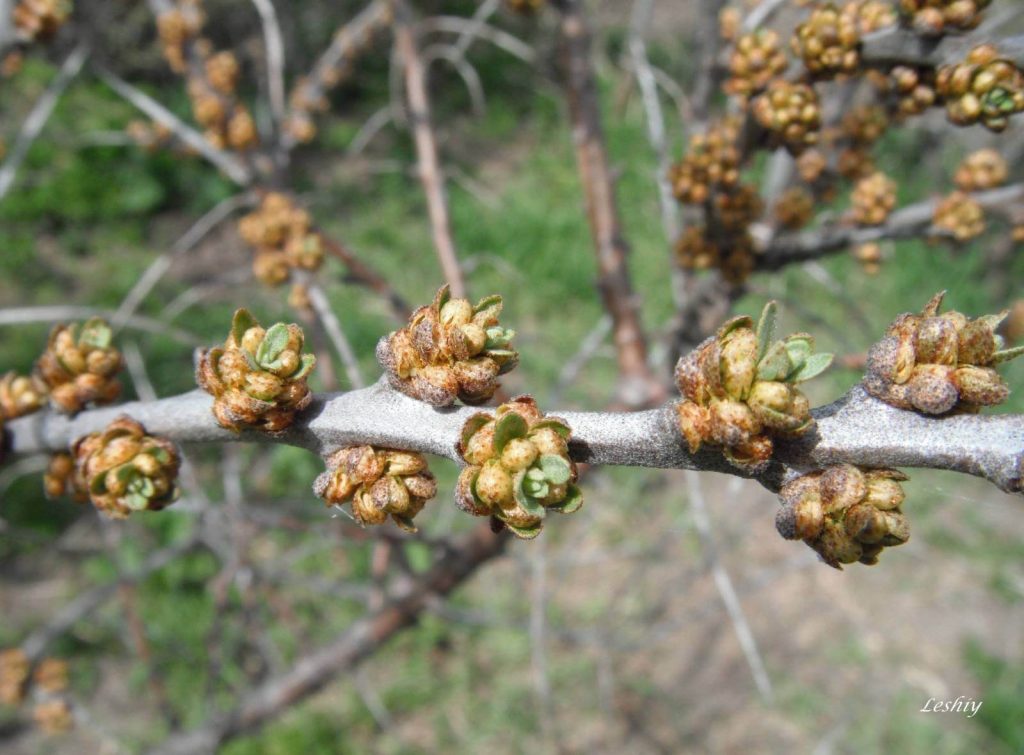
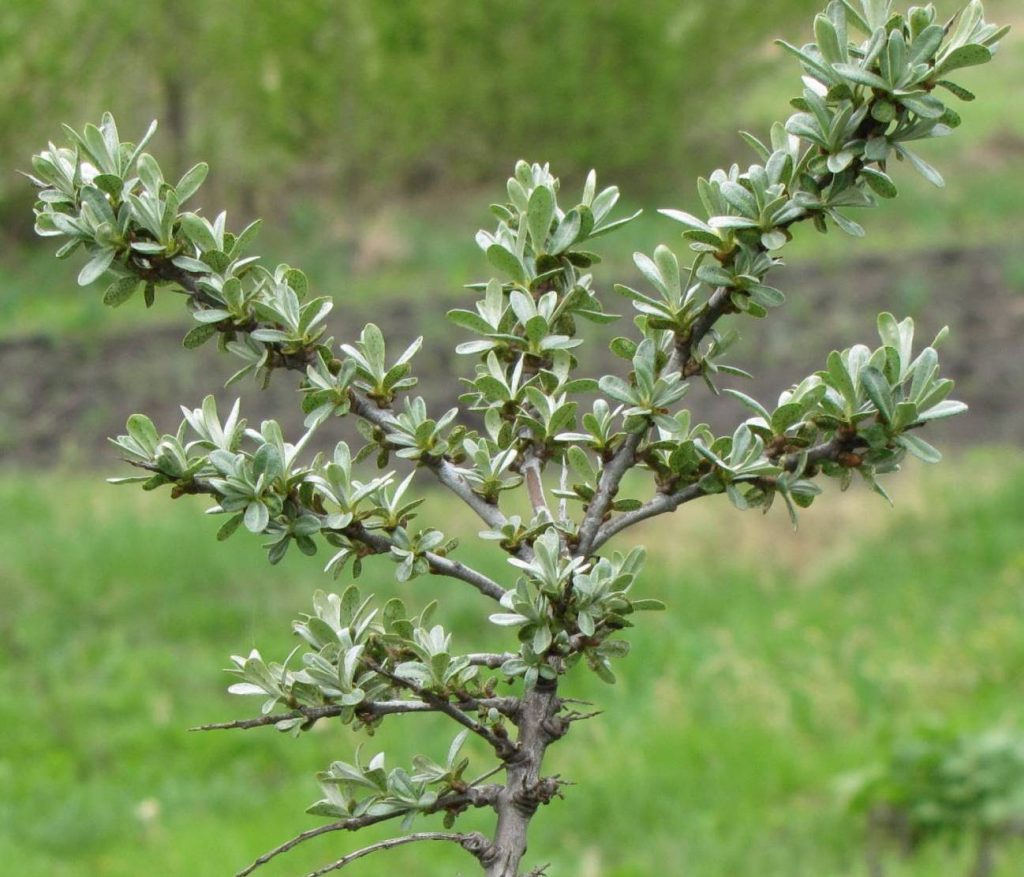
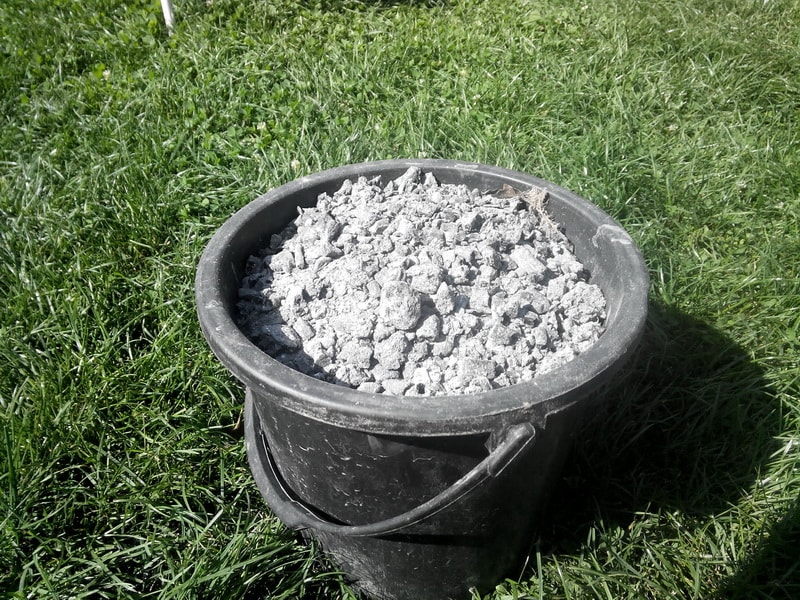

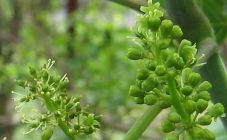
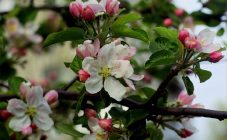
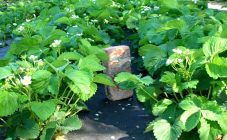









My sea buckthorn does not bloom at all (female bushes), for seven years already! What to do?